Archive for January, 2015
New from the archives
29 January 2015 | This 'n' that
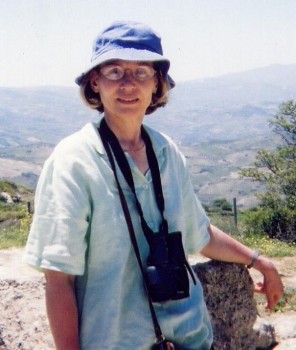
Ulla-Lena Lundberg
Low-lying, sea-girt pieces of rock strewn across the sea midway between Finland and Sweden, the Åland Islands – known in Finnish as Ahvenanmaa – are a world unto themselves. In mind and spirit they are separate from both Finland (to which they technically belong) and Sweden, giving their inhabitants, writers included, a fascinating outsider status.
This week’s archive find, an extract from Leo, the first volume of Ulla-Lena Lundberg’s trilogy set in 19th-century Åland, offers a compelling portrait of the potent mix of cosmopolitanism and (literal) isolation of the islands’ seafaring community, in which the men sail the seas and the women stay at home.
Born on Åland in 1947, Lundberg is a writer of novels, short stories, poems and other essays; her work, she says, derives from her habit of sitting under the table as a small child and listening to what the grown-ups said. She received the Finlandia Prize in 2012 for her novel Is [‘Ice’], and the Tollander Prize in 2011.
*
The digitisation of Books from Finland continues apace, with a total of 354 articles and book extracts made available online so far. Each week, we bring a newly digitised text to your attention.
Jenni Erkintalo: Värejä meressä [Colours in the sea]
29 January 2015 | Mini reviews, Reviews
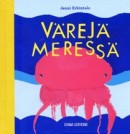 Värejä meressä
Värejä meressä
[Colours in the sea]
Kuvitus [Ill. by]: Jenni Erkintalo
Helsinki: Etana Editions, 2014. 32 pp., ill.
ISBN 978-952-7105-00-9
€17.90, hardback
In recent years a large number of board books have appeared in Finland: many of the graphic artists and designers of the younger generation have taken an interest in them. The style is generally modern, but unfussy and easy for a child to make sense of. Graphic artist Jenni Erkintalo’s (born 1978) picture book debut is ebullient, in all its simplicity. With supple rhyming text and minimal drawings, little readers are guided through the beginnings of learning colours. The three primary colours give birth to new colours and the illustrations demonstrate the mixture of colours in a fun way. The book has thick cardboard pages that can stand up to even a two-year-old’s rough handling.
Translated by Lola Rogers
Saku Heinänen: Zaida ja lumienkeli [Zaida and the snow angel]
29 January 2015 | Mini reviews, Reviews
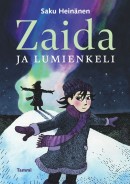 Zaida ja lumienkeli
Zaida ja lumienkeli
[Zaida and the snow angel]
Kuvitus [Ill. by]: Saku Heinänen
Helsinki: Tammi, 2014. 207 pp., ill.
ISBN 978-951-31-7631-0
€25.90, hardback
The adopted child’s story is already a familiar one from old classics of girl’s literature. This debut novel by Saku Heinänen, the story of Zaida, a girl adopted from India, draws on this tradition, yet Heinänen (born 1968), a professor in graphic design at Aalto University, succeeds in creating a fresh and original setting and sympathetic central characters. Zaida is used to talking openly with her parents, but bullying at school makes her withdraw into her shell. She gets her strength from a soul sister who understands her bad moods. This tension is what gives this novel its extraordinary suspense. Heinänen’s book doesn’t paint a child’s everyday life as idyllic – there are many kinds of secrets in one little family. Zaida’s uncle is prone to drink and melancholy, but the two are still close. Heinänen also illustrated the book and designed his own font – Freya – just for the book. His wife is children’s book author and illustrator Christel Rönns.
Translated by Lola Rogers
Why translate?
28 January 2015 | Essays, Non-fiction
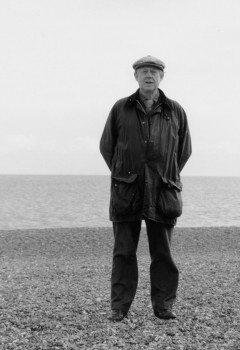
Down by the sea: Herbert Lomas in Aldeburgh. – Photo: Soila Lehtonen
‘People do not read translations to encourage minor literatures but to rediscover themselves in new imaginative adventures‚’ says the poet and translator Herbert Lomas in this essay on translation (first published in Books from Finland 1/1982). ‘Translation is a thankless activity,’ he concludes – and yet ‘you have the pleasure of writing without the agony of primary invention. It’s like reading, only more so. It’s like writing, only less so.’ And how do Finnish and English differ from each other, actually?
Any writer’s likely to feel – unless he’s a star, a celebrity, a very popular and different beast – that the writer is a necessary evil in the publisher’s world, but not very necessary. How much more, then, the translator from a ‘small’ country’s language.
Why do it? The pay’s absurd, you need the time for your own writing, it’s very hard to please people, and translation is, after all, the complacent argument goes, impossible. I’m convinced by all these arguments, and really I can’t afford to go on; but I don’t regret what I’ve done and, looking back, I can find two reasons for translating Finnish writing, one personal, the other cultural. More…
Marjo Vilkko: Suomi on ruotsalainen [Finland is Swedish]
16 January 2015 | Mini reviews, Reviews
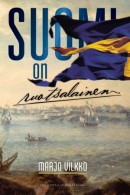 Suomi on ruotsalainen
Suomi on ruotsalainen
[Finland is Swedish]
Helsinki: Schildts & Söderströms, 2014. 321 pp.
ISBN 978-951-52-3419-3
€36, hardback
Finland was a part of the Swedish kingdom from the deep Middle Ages until 1809, when for a hundred years it was incorporated into Russia. The Swedish period left profound traces in Finnish society, and these were examined – with lively discussion – in the television series Finland is Swedish. Now the series scriptwriter and editor Marjo Vilkko has provided a more thoroughgoing treatment of the topic in her book. Although Finland is a country that shares Western and Nordic values, it differs from Sweden in several respects. For historical reasons and due to the presence of a significant Swedish-speaking minority, Swedish is still an official language; many things have moved from Europe to Finland via Sweden. However, at times the differences in Finland’s development have been emphasised by those wishing to propagate ‘original Finnish’ characteristics. With the use of fascinating examples and reflections drawn from history, Vilkko shows, for example, how Finland’s local government, legal system and Lutheran religion are to a large extent an inheritance from the Swedish period, with a continuous mutual interaction. The book moderately propagates the recognition of a common heritage and support for mutual understanding.
Translated by David McDuff
Not a world language, and yet….
16 January 2015 | Articles, Non-fiction

The editors (Hildi Hawkins and Soila Lehtonen) at the screen: we begun publishing material on our website in 1998. Photo: Jorma Hinkka, 2001
Longevity may not generally be a virtue of literary magazines – they tend to come and go – but Books from Finland, which began publication in 1967, has stuck around for a rather impressively long time. Literary life, as well as the means of production, has changed dramatically in the almost half-century we have been in existence. So where do we stand now? And what does the future look like?
This is the farewell letter from the current Editor-in-Chief, Soila Lehtonen – who began working for the journal in 1983
‘The literature of Finland suffers the handicap of being written in a so-called “minor” language, not a “world” language…. Finland has not entirely been omitted from the world-map of culture, but a more complete and detailed picture of our literature should be made available to those interested in it.’
Thus spake the Finnish Minister of Education, R.H. Oittinen, in early 1967, in the very first little issue of Books from Finland, then published by the Publishers’ Association of Finland, financed by the Education Ministry.
Forty-seven years, almost 10,000 printed pages (1967–2008) and (from 2009) 1,400 website posts later, we might claim that the modest publication entitled Books from Finland, has accomplished the task of creating ‘a more complete and detailed picture’ of Finnish literature for anyone interested in it. More…
Aho & Soldan: Helsinki 1950-luvun väreissä / Helsingfors in 1950-talets färger / Helsinki in 1950’s colours
11 January 2015 | Mini reviews, Reviews
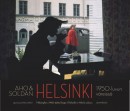 Aho & Soldan: Helsinki 1950-luvun väreissä / Helsingfors in 1950-talets färger / Helsinki in 1950’s colours
Aho & Soldan: Helsinki 1950-luvun väreissä / Helsingfors in 1950-talets färger / Helsinki in 1950’s colours
Teksti / text: Eino Leino
Translation into Swedish by Marjut Hökfelt, into English by Elina Adams
Helsinki: Gummerus, 2014. 168 pp., ill.
ISBN 978-951-20-9527-8
€36.90, hardback
The photographer Claire Aho (born 1925) is the granddaughter of the author and journalist Juhani Aho (1861–1921) and his artist wife Venny Soldan-Brofeldt. Two of Aho’s sons, Heikki and Björn, became photographers and documentary film producers, founding the company Aho & Soldan. In the 1940s Heikki’s daughter Claire began to work for Aho & Soldan and becme a well-known fashion photographer. She also began photographing her native Helsinki; in 1952 she was assigned to film the Helsinki Summer Olympics. She continued her collaboration with Pathé News until the early 1960s. Colour came, literally, into the picture after the war; the photographs in this book feature life in the 1950s Helsinki. The photographs in their gently faded colours of the still small city, its inhabitants, parks, buildings and monuments are taken by either the two brothers or Claire Aho – in their time they were all signed just by Aho & Soldan. In his essay journalist Eino Leino portrays life in the city that he remembers from his own childhood in the post-war era, which to today’s reader appears sweetly idyllic, somehow optimistic and peaceful; the city has changed greatly – and yet stayed the same.
